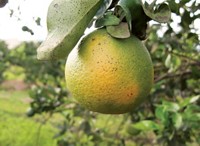Advertisement
Grab your lab coat. Let's get started
Welcome!
Welcome!
Create an account below to get 6 C&EN articles per month, receive newsletters and more - all free.
It seems this is your first time logging in online. Please enter the following information to continue.
As an ACS member you automatically get access to this site. All we need is few more details to create your reading experience.
Not you? Sign in with a different account.
Not you? Sign in with a different account.
ERROR 1
ERROR 1
ERROR 2
ERROR 2
ERROR 2
ERROR 2
ERROR 2
Password and Confirm password must match.
If you have an ACS member number, please enter it here so we can link this account to your membership. (optional)
ERROR 2
ACS values your privacy. By submitting your information, you are gaining access to C&EN and subscribing to our weekly newsletter. We use the information you provide to make your reading experience better, and we will never sell your data to third party members.
Environment
Neonicotinoid Can Harm Bees
by Britt E. Erickson
January 11, 2016
| A version of this story appeared in
Volume 94, Issue 2
The neonicotinoid insecticide imidacloprid has negative effects on bees and other pollinators at residue levels above 25 ppb, according to preliminary assessments released last week by EPA and Canada’s Pest Management Regulatory Agency. These effects include reducing both honey production and the numbers of pollinators. EPA’s study finds that pollen and nectar of citrus and cotton flowers can harbor residues of imidacloprid above the safety threshold. Corn and leafy vegetables, however, have residue levels below the threshold, the agency notes. The assessment is the first of four that EPA plans to release this year evaluating the risks of neonicotinoid pesticides for bees attracted to various crops. EPA expects to release assessments on three more—clothianidin, thiamethoxam, and dinotefuran—in December. EPA is working closely with California’s Department of Pesticide Regulation to complete the assessments. Once finalized, they could trigger regulatory action to restrict use of the pesticides.






Join the conversation
Contact the reporter
Submit a Letter to the Editor for publication
Engage with us on Twitter